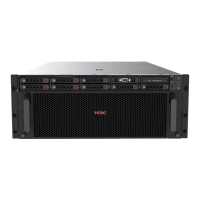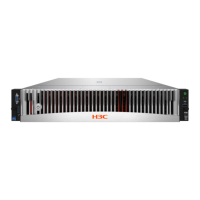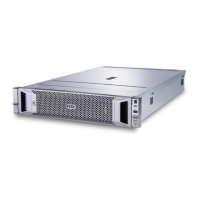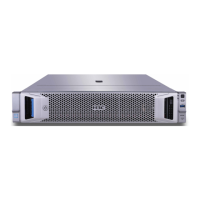17
Parameter Description
n Number of NVMe drives in the RAID array.
l RAID level.
z RAID capacity.
3. Execute the mdadm –D /dev/md0 command to view RAID information, including container
name, RAID level, strip size, number of NVMe drives, and RAID status, as shown in Figure 26.
Figure 26 Viewing RAID information
Configuring hot spare drives
Use one of the following methods to configure hot spare drives:
Configuring hot spare drives while creating a RAID array.
Configuring hot spare drives after RAID array creation.
Configuring hot spare drives while creating a RAID array
1. Verify that VMD is enabled. For more information, see "Verifying VMD status."
2. Execute the
mdadm –C /dev/md0 /dev/nvme[1-3]n1 –n 3 –e imsm command to create
a container, as shown in Figure 27. The number of NVMe drives for creating the container is n
+ 1. This section takes 3 as an example.
Figure 27 Creating a container
3. Execute the mdadm –C /dev/md1 /dev/md0 –n 2 –l 1 –z 10G command to create a
RAID array, as shown in Figure 28. The number of NVMe drives for creating the RAID array is
n. This section takes 2 as an example.

